Hex-a-Huddle Board Game
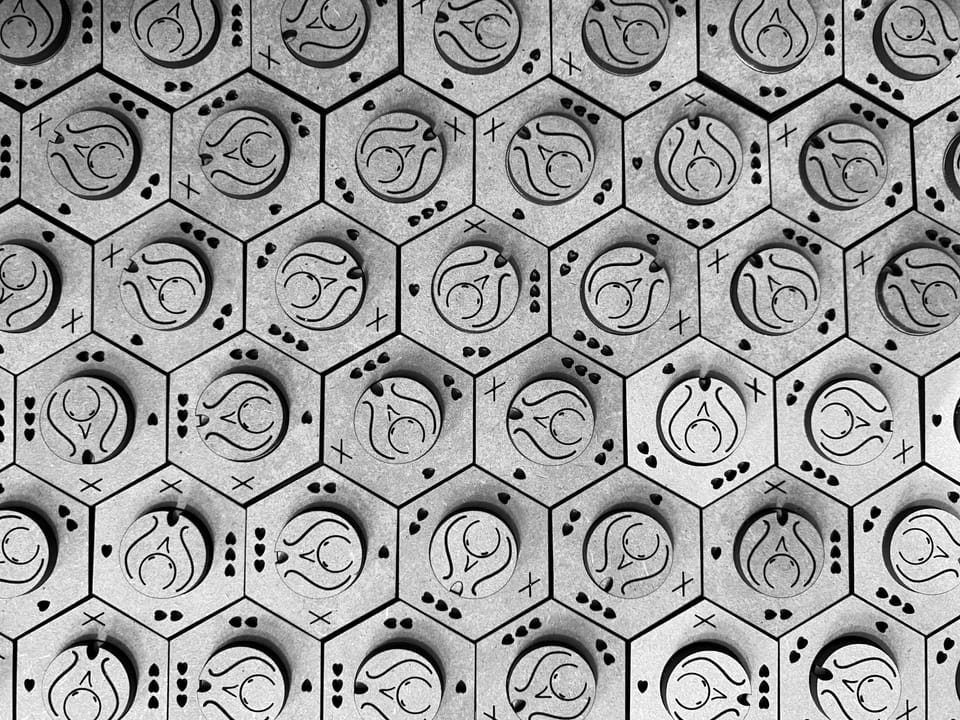
This week Quanta Magazine published an article on penguins and their hexagonal behavior. I shared this article with my 14yr old daughter, Opal, and we started discussing how this would make a great board game.
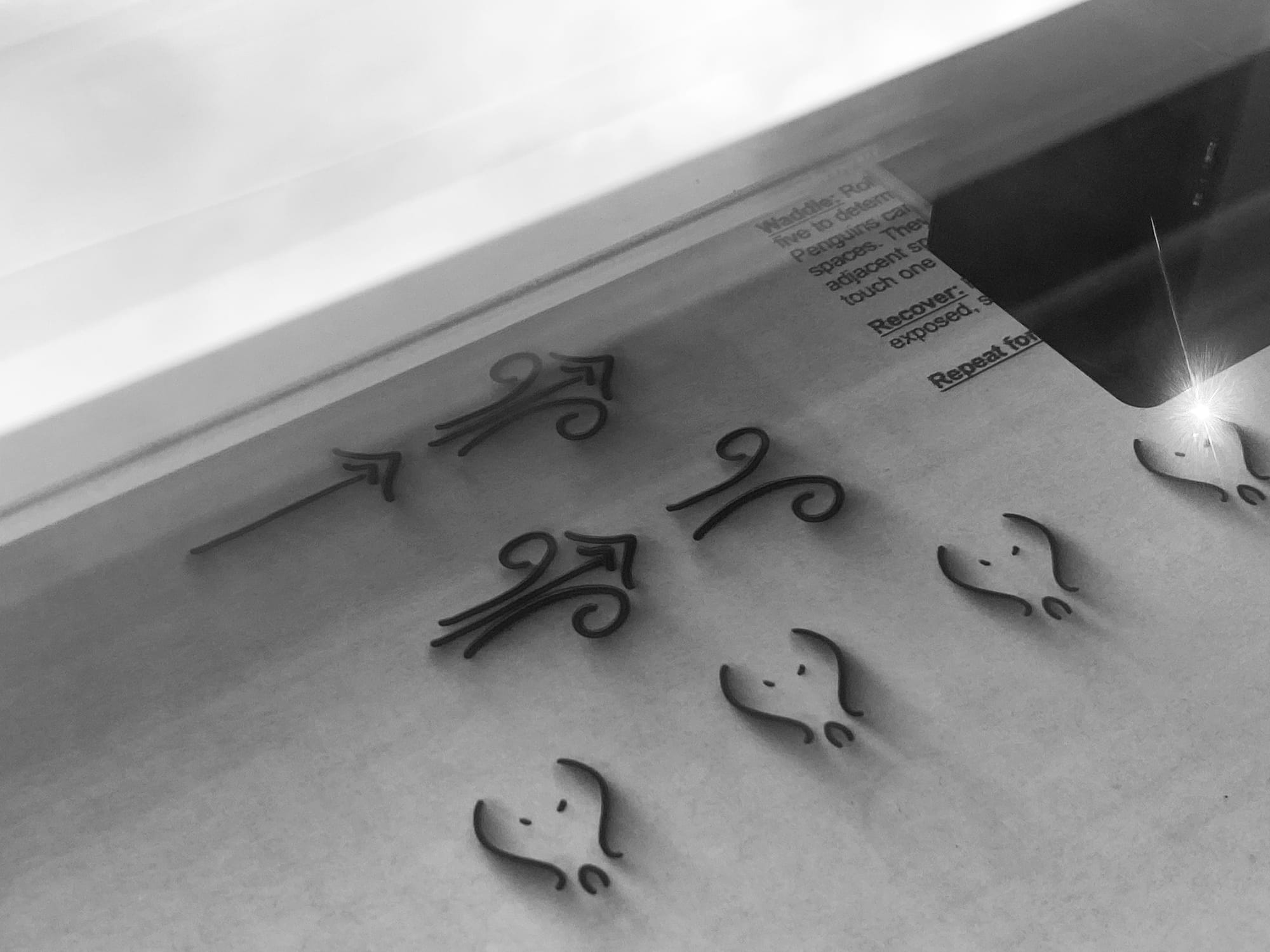
We designed pieces, drafted our prototypes in Affinity Design, and then utilized a Glowforge to cut. After gluing for a few hours, we finally got to play, and we played our hearts out. My other two children played as well and helped refine the rules and game play.
A brief summary of the game: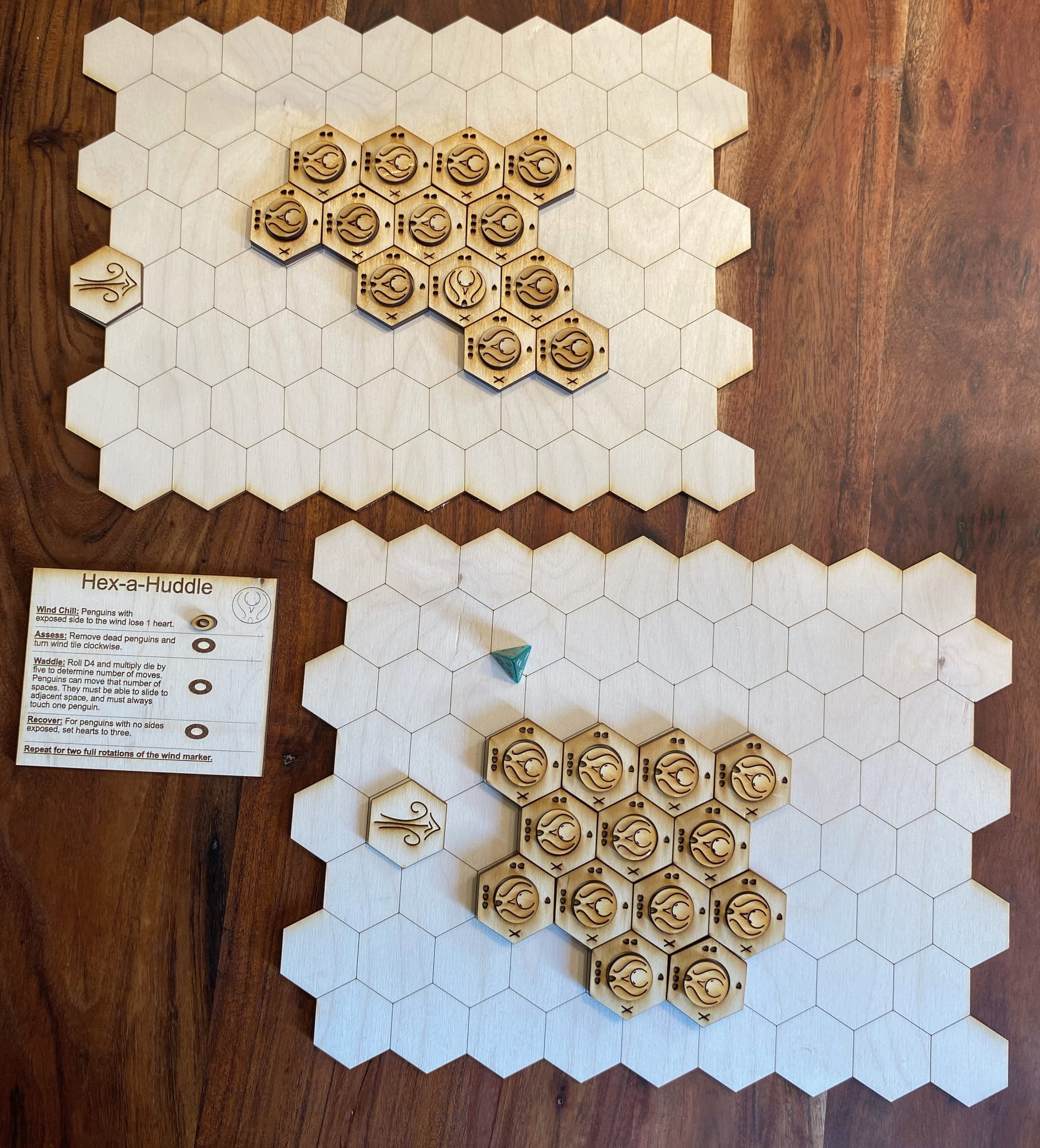
Pieces:
26 x penguins with hexagon and dial, 2 x hexagonal boards, 2 x wind tiles, 1x Game Play Indicator, and 1x Game Play donut.
Setup:
- Each player has 13 penguins, a wind tile and a board.
- To set up the game the players set each penguin’s dial to 3 hearts and the wind tile facing from left to right.
- Each player makes a huddle of penguins. Every penguin must touch at least one other penguin. They can be in any arrangement.
Turn Play:
- Each Round:
- Wind Chill: Penguins with an exposed side to the wind lose one heart. Exposure means not touching another penguin on that side.
- Assess: Remove dead penguins and turn the wind tile 60 degrees clockwise.
- Waddle: Roll D4 and multiply die by five to determine number of moves. Penguins can move that number of spaces. They must be able to slide to an adjacent space and must always touch at least one penguin.
- Recover: For penguins with no sides exposed, set hearts to 3.
- Play two full rotations of the wind tile for a full game, or one rotation for a short game.
Winning:
At the end of a game, players count the hearts on the board. The player with the most hearts wins.
Below is a draft (very rough) video of play:
For sale? We have one copy for sale currently – it could be sold by the time you read this. There are hours that are put into making a game and we can’t charge a competitive price currently given materials and labor. We are working on this.
Behind the Scenes:
Here is some of the behind the scenes questions that were asked:
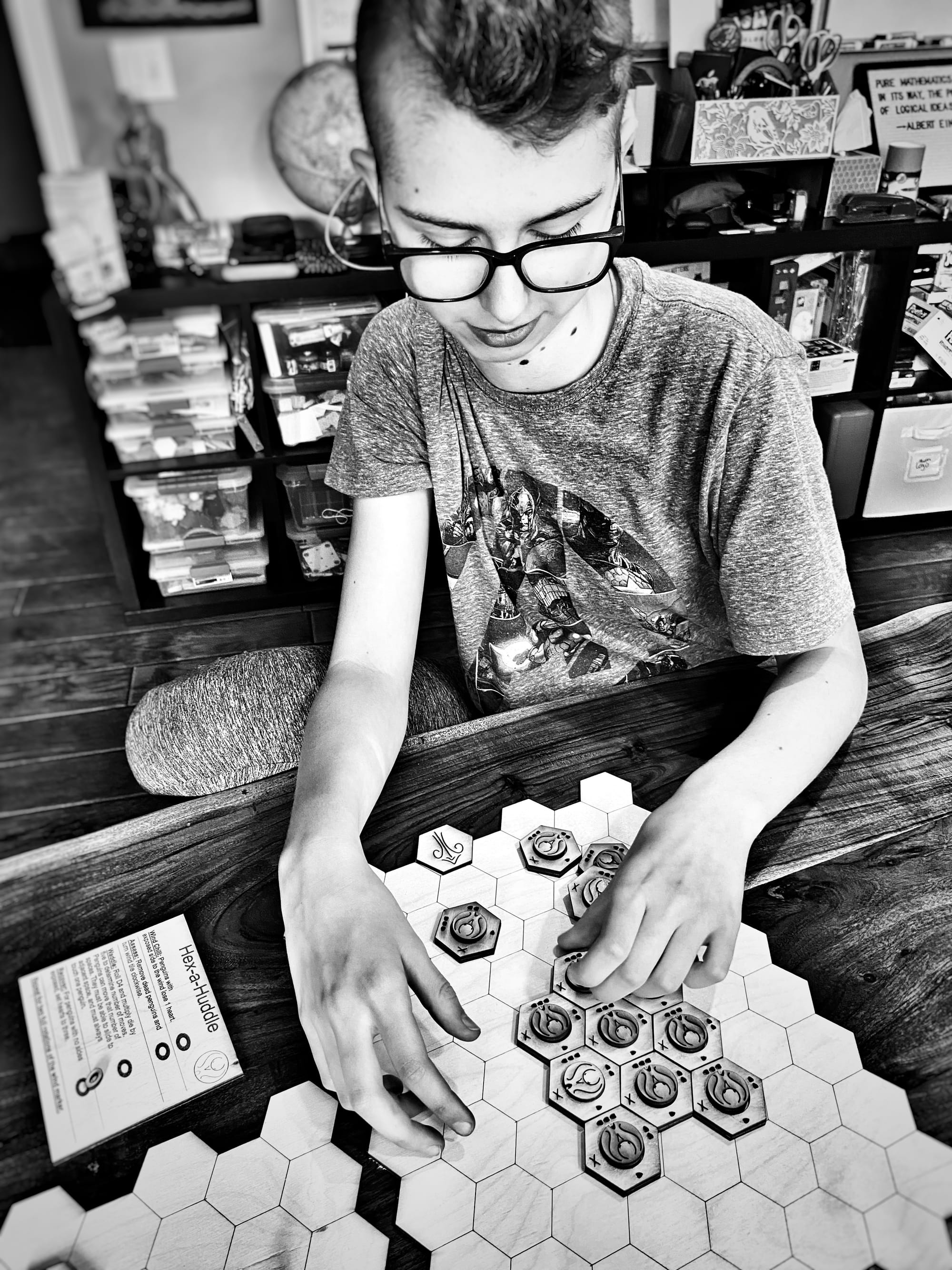
Opal: “How are we going to indicate loss of life?” Me: “Not sure, I’ll think about it while I run…” My headphones coincidentally weren’t charged, so in the silence, the design came to mind for hexagon penguin dials.
How many moves would work and how many penguins? – We tried various multiples, constraints, and rules for hours.
Can we use dead penguins as a shield? – Since they aren’t likely to stay upright – no. Maybe we should call the scientists.
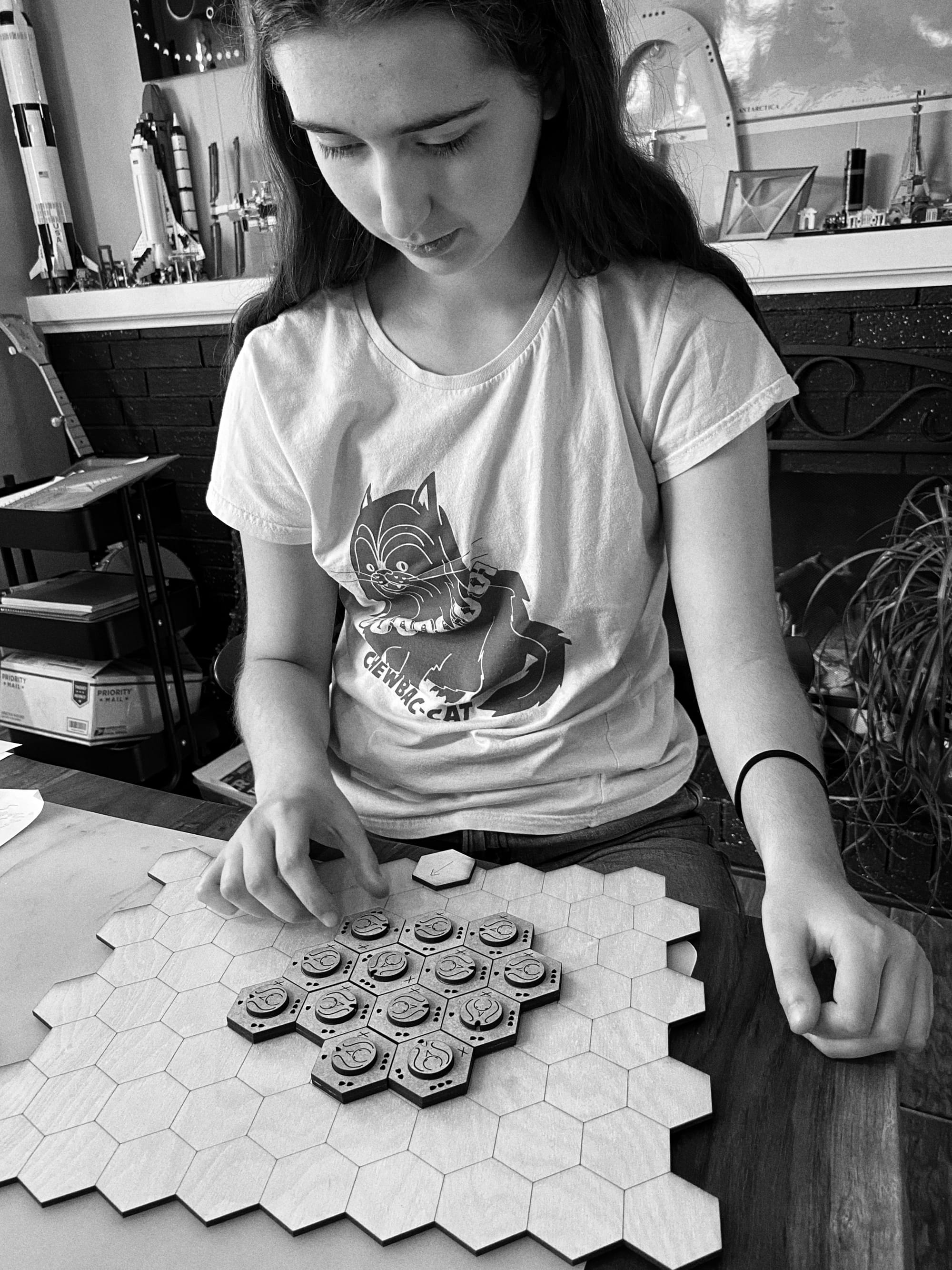
Me: “Are you sure you want a game and not just an army of penguin toys?” Opal: “I am pleased with the army…”
Me: “Should we use a unit circle with unit vectors? Everyone would love pi!” Everyone: Blank stare…
Opal: “Maybe we should only use hexagonal numbers for the penguins…” 2n^2-n
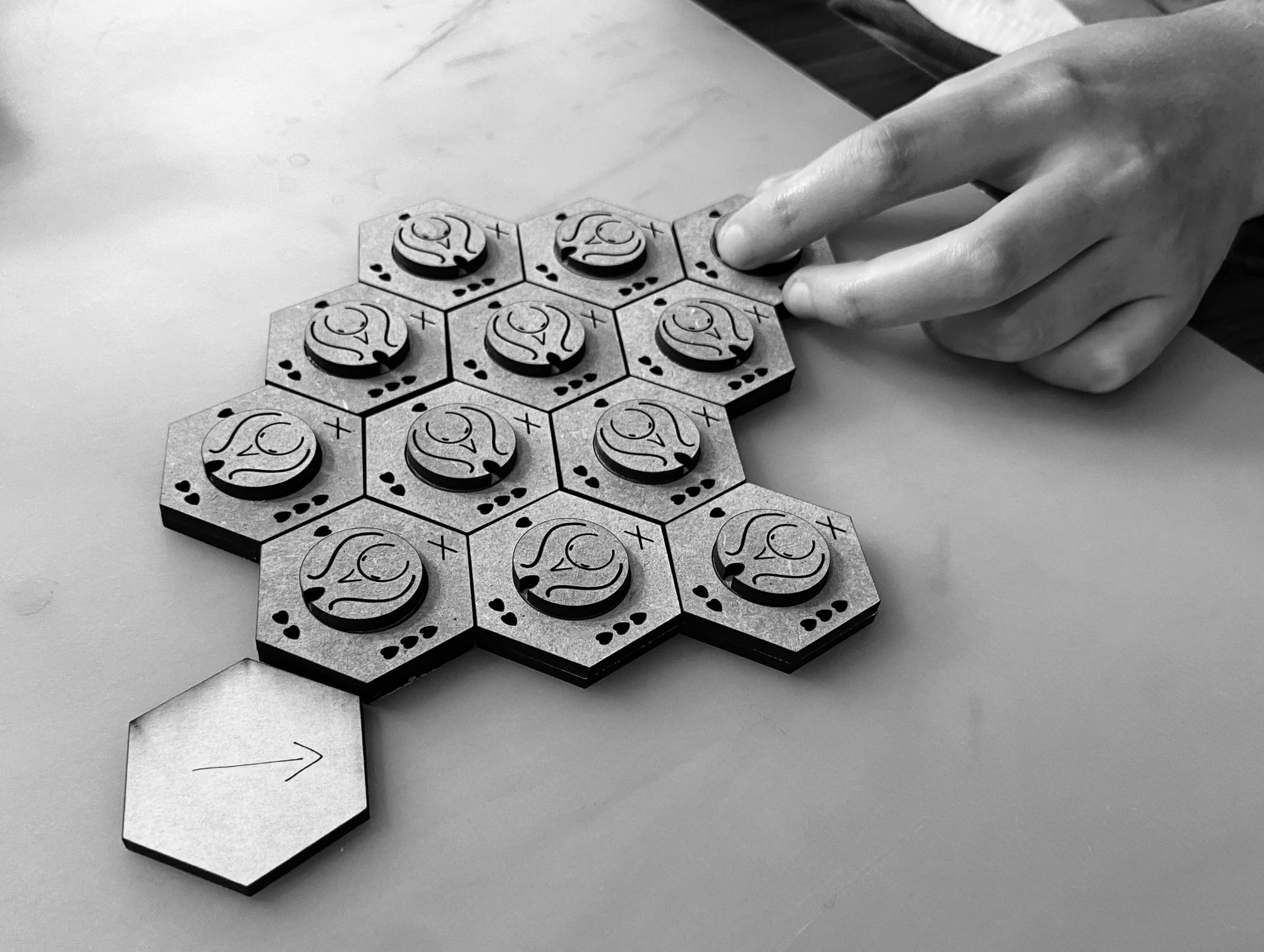
Should we use all 45 penguins or 13? 13 works well for game play. 22 also works well for a 2 player game. We actually came up with various versions that use different multiples for die roll, different numbers of penguins, and no board. We also looked at cooperative play.
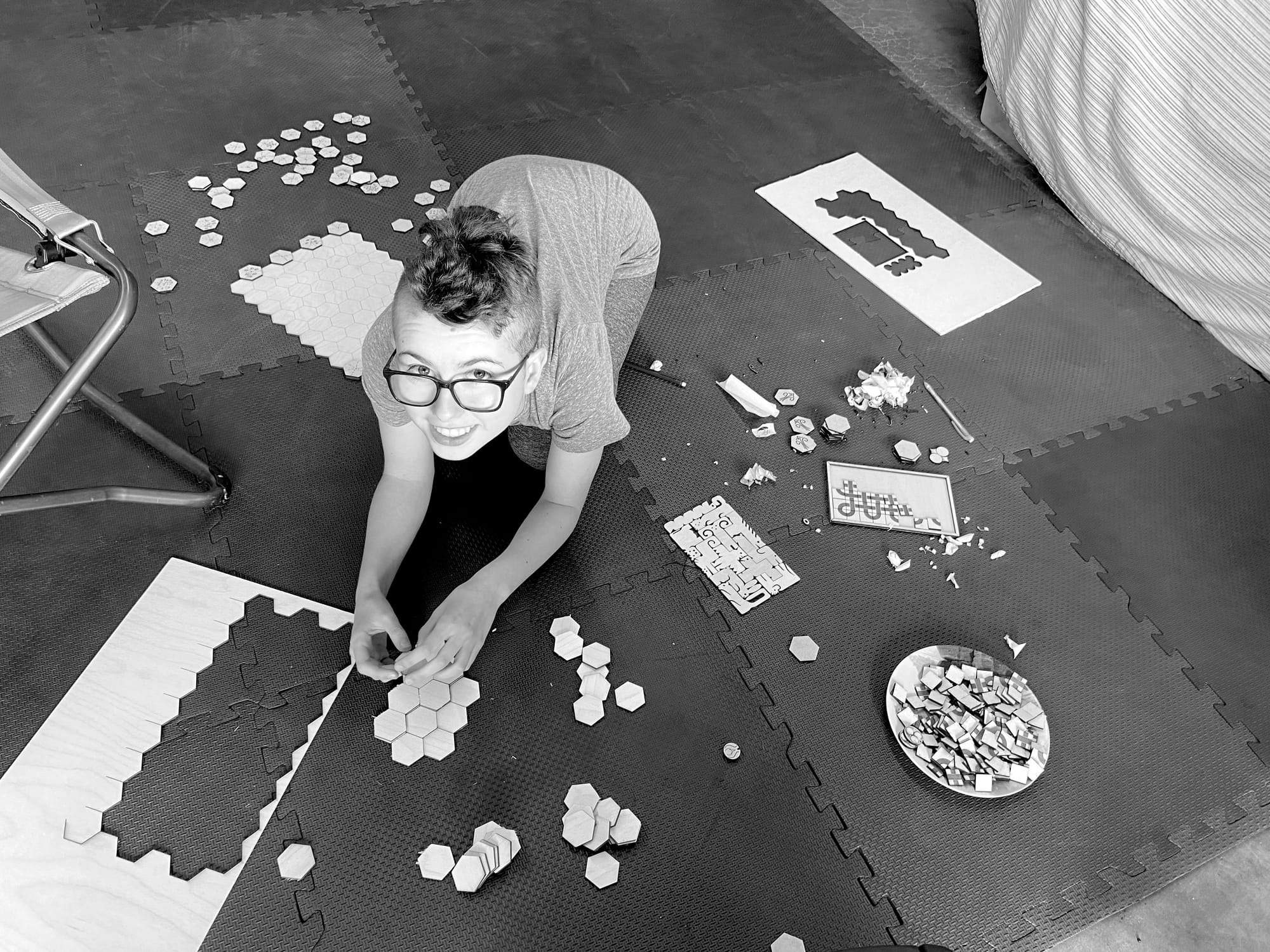
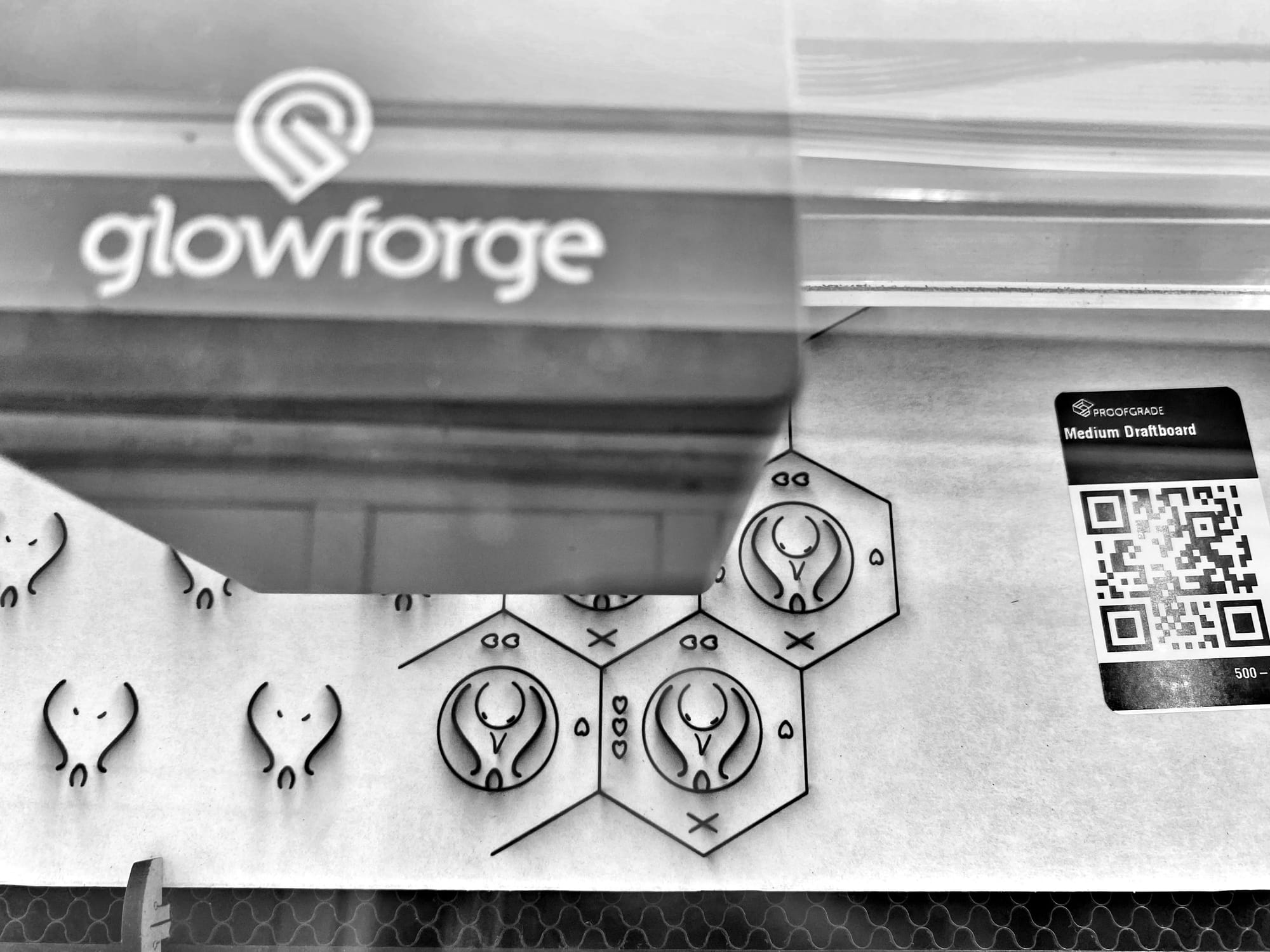
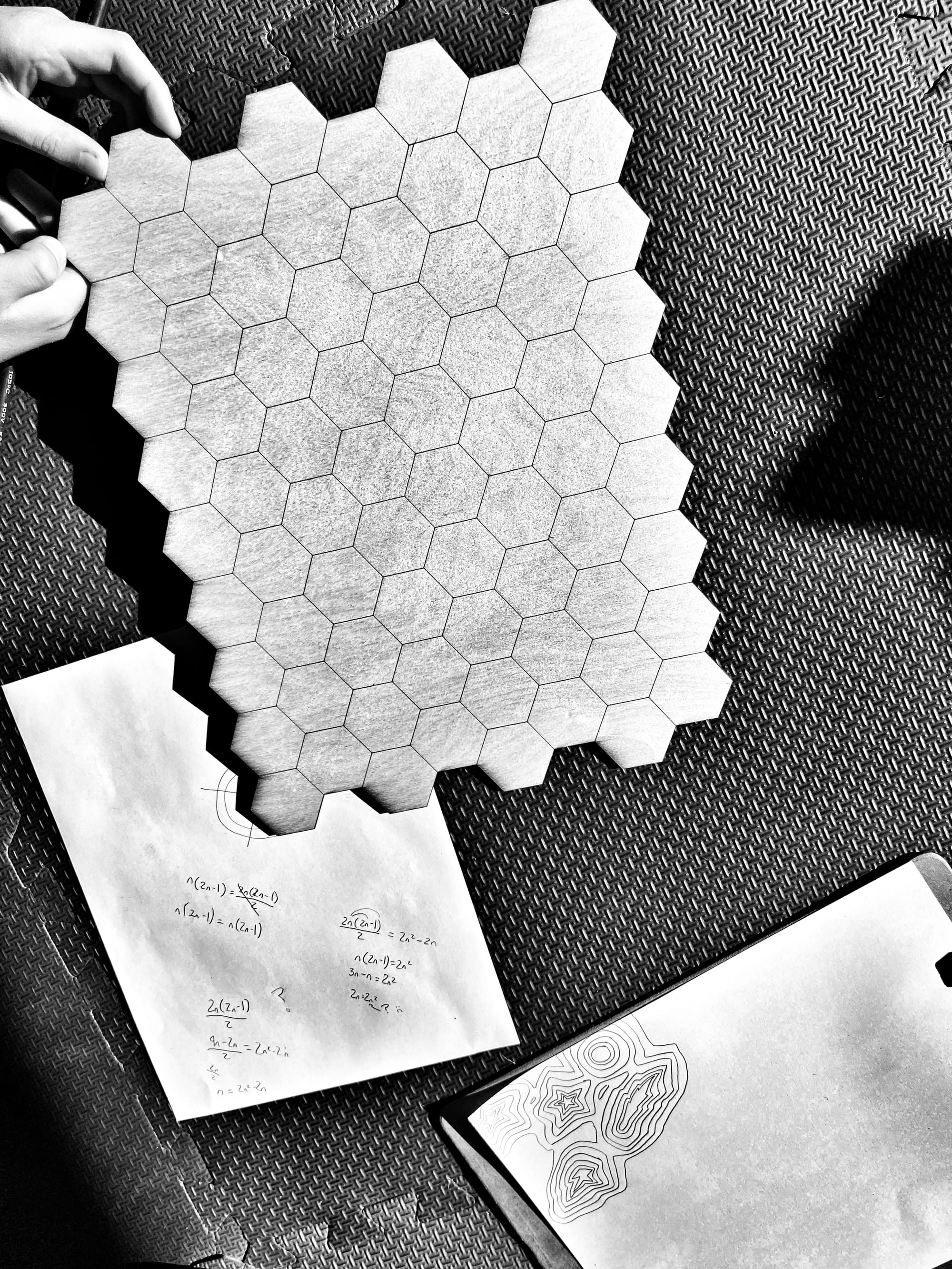
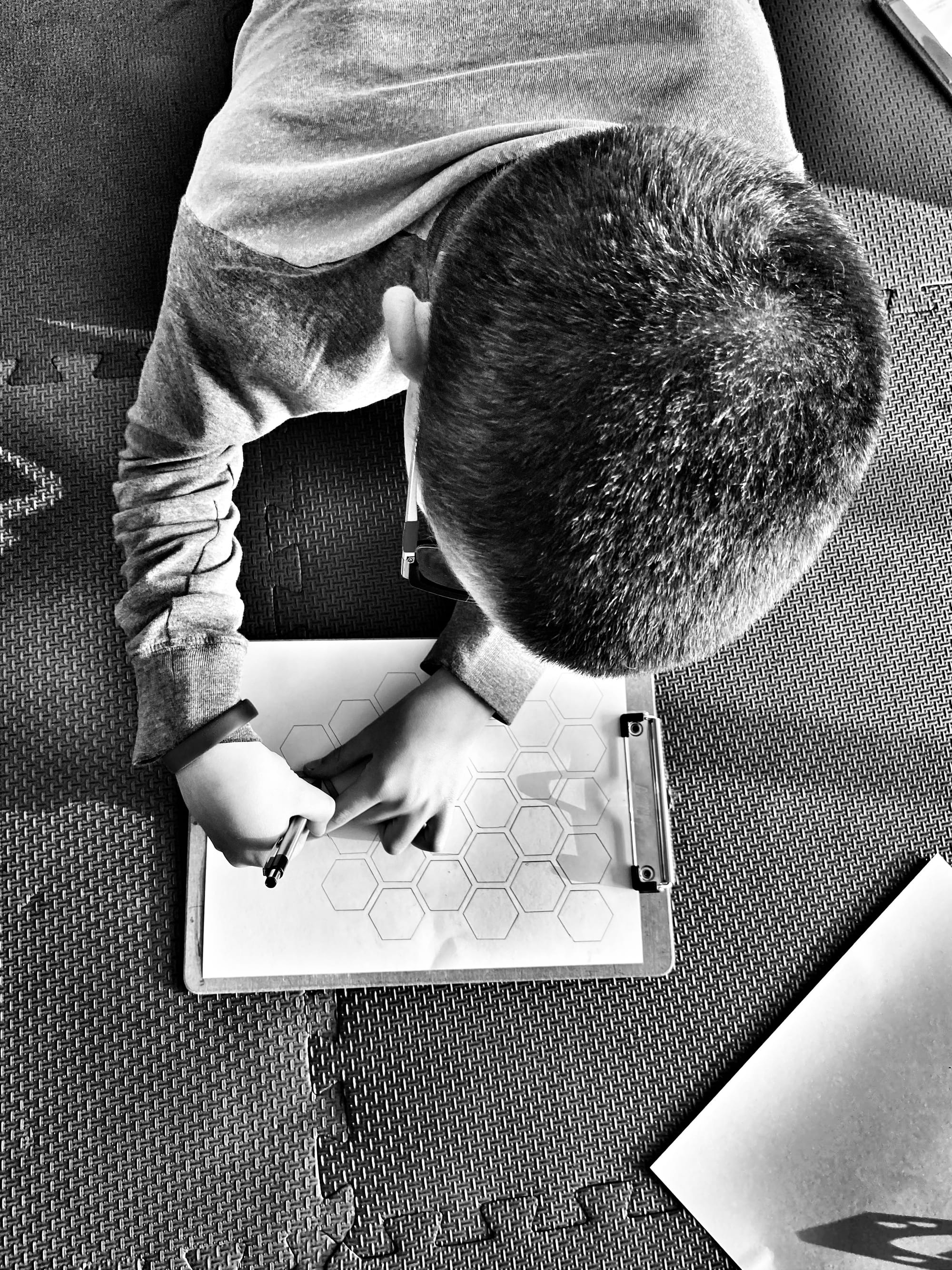




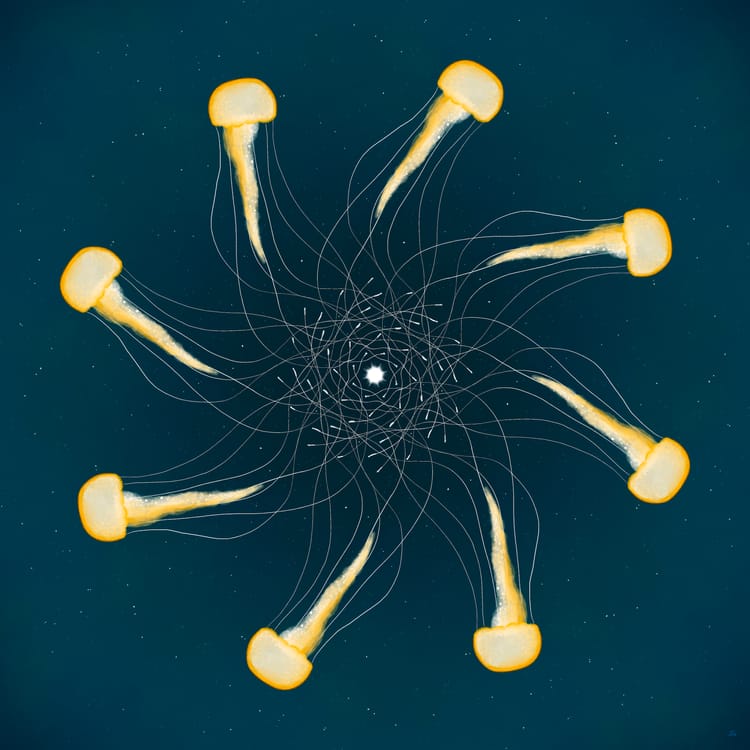

Member discussion